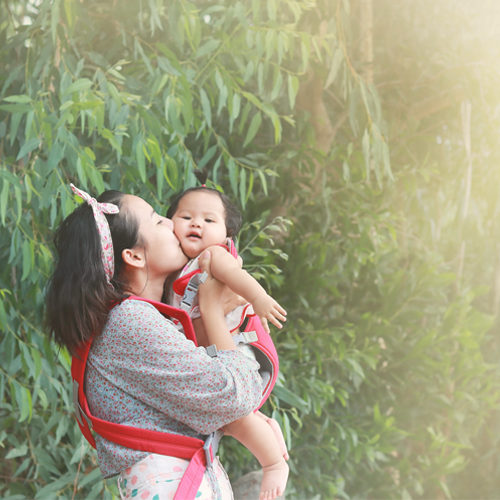Attachment parenting: why children need to be held and hugged

Attachment parenting is a way of raising a child that is centered on developing a responsive, respectful, and compassionate connection between the child and the parent. The goal is to allow children to develop a positive self image and form healthy emotional relationships within the family and other people they will meet through their life.
The history behind attachment parenting
Attachment parenting is one of the oldest types of child-rearing. Some works in anthropology show how the ‘attachment’ instincts have deep roots in our evolutionary past. The approach makes sense since children were reared for hundreds of thousands of years in close proximity to their parents, often with skin to skin contact and sharing a bed — which made a lot of sense, given the dangers our ancestors faced in the past. From an evolutionary perspective, being separated from the parents, or sleeping in a different room, is completely unnatural.
In some Asian countries, such as Japan, children still tend to sleep between their parents until adolescence. The low rates of Sudden Infant Death Syndrome (SIDS) among Japanese babies is also attributed to the fact that their mothers are always right next to their children at night.
Practices associated with attachment parenting
Certain parental practices are closely associated with attachment parenting. These practices are believed to enhance a close relationship and bond between the parent and child, which can help the child form secure relationships later in life. These are some of the practices:
- Breastfeeding: Attachment parenting encourages breastfeeding your child until they no longer want.
- Babywearing: This refers to the use of slings and front carriers in carrying babies for a good part of the day.
- Co-sleeping: This practice implies letting the child sleep within your arm’s reach and being nursed throughout the night. It is believed to enhance responsive parenting in addition to encouraging parent-child bonding and a reduction of risk in SIDS.
The principles of attachment parenting
Generally, attachment parenting involves treating babies with kindness, and respect and being physically close to them. Some of the basic principles include:
- Trying to respond to the child’s natural needs — if children want to be held, holding them.
- Trying not to punish the child physically or emotionally — through neglect
- Being prompt and consistent with the child’s need for nutrition, sleep, discipline — as regards the physical and emotional connection
- Valuing consistency in care from parents and a few carefully chosen caregivers
- Promoting gentle and responsive correction techniques instead of aggressive and disciplinary ones
The theory: secure vs insecure attachment
A large body of research has shown that responsive, sensitive parenting benefits children. The quality of attachment that forms between parents and children often determines how a child feels about relationships.
A child with a secure attachment is generally able to respond to stress in healthy ways and establish meaningful relationships. A child with an insecure attachment pattern can be more susceptible to stress, develop a more negative self image, and have difficulty forming healthy relationships as an adult.
The research behind attachment parenting:
Research suggests that how a mother responds to her baby’s cries can make a big difference in the child’s ability to learn, develop, and thrive. While a warm, supportive response can help the baby calm down and feel secure, a distant or angry reaction leaves the child to fend for themself in a scary world.
Over time, the lack of nurturing in the face of adversity in childhood can contribute to “toxic stress” — a harmful level of stress that can affect the child’s well-being well into adulthood.
Concerns about attachment parenting
Some parents fear that attachment parenting will create dependent, clingy children. Others believe that it is very demanding for the parents and could be mentally, emotionally, and physically draining. However, there is no serious research to support or refute these. In fact, the opposite is true. Those children that are securely attached to their parents feel confident enough to also leave them. Those that feel insecurely attached are afraid that their weak bond to their mother or father can break, and as a result, become clingy.
Verified:
Dr. Ketsupa Jirakarn (Mental health specialist) (31 March 2021)
Sources:
- McKenna J. J., McDade T. (2005). Why babies should never sleep alone: a review of the cosleeping controversy in relation to SIDS, bedsharing and breastfeeding. Pediatr. Resp. Rev. 6, 134–152
- Toxic stress exposure in childhood linked to risky behavior, adult disease
- Attachment Parenting Basic Principles and Criticisms
- The science of attachment parenting
- What is Attachment Parenting?
- Getting Attached
- Attachment parenting



